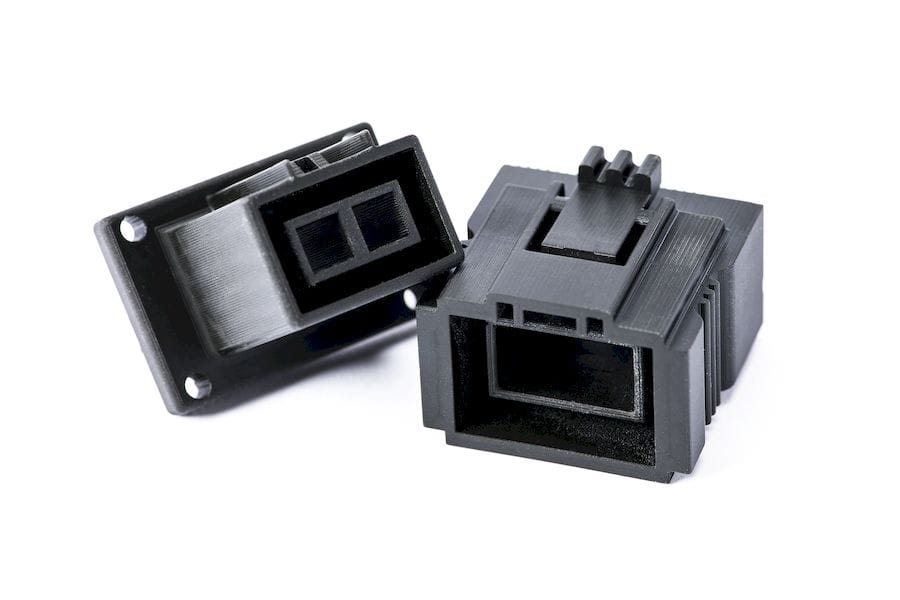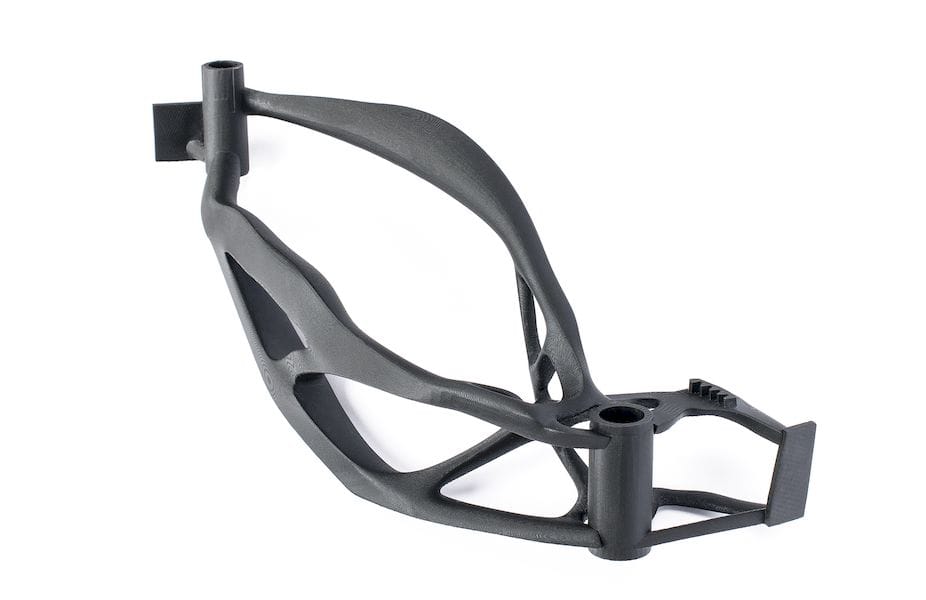
Carbon’s manufacturing strategy was extended today with the announcement of some new materials.
The two new materials are EPX 82 and EPU 41. These engineering materials offer some unique properties.
EPX 82 is designed for the automotive industry and specifically for connectors, brackets and housings. It has high strength and won’t deform until temperatures rise to at least 125C.

What’s most important for this material is that it conforms to the USCAR-2 SAE standard, which specifies property requirements for fluid connectors.

The second material announced is a flexible material, EPU 41. This material joins Carbon’s growing list of elastomeric materials, and offers some great performance, as explained by Carbon:
It has higher resilience and better low-temperature performance compared to EPU 40, and its combination of tear strength, energy return, and elongation make it perfect for cushioning, impact absorption, and comfort. EPU 41 also performs very well in functional testing, including fatigue, hydrolysis, UV-stability, and plastic deformation tests.
These factors are quite important to Carbon’s strategy of replacing and enhancing foam-based applications with 3D printed equivalents. By combining their automated lattice generation systems with the new EPU 41, designers should be able to produce even more unique components for fashion and industry.
Carbon’s goal is to make inroads into manufacturing by organizing their offerings in ways that make it easy to adopt. One clue towards this strategy is the fact that EPU 41 is offered only in bulk, specifically for their automated industrial systems.
In particular, they seem to have a two-prong strategy that revolves around materials and software. They’ve created software that can uniquely and easily design highly complex lattices that can take the place of foam in many applications.

You can’t make use of the generated lattices unless you can use materials that are suitable for the real-life application of the design.
Similarly, you can’t make effective use of the new materials unless you have the right kind of design that leverages their properties on the Carbon equipment.
Thus they need to pursue two angles here: software and materials. And that’s exactly what this announcement is all about.
Via Carbon

